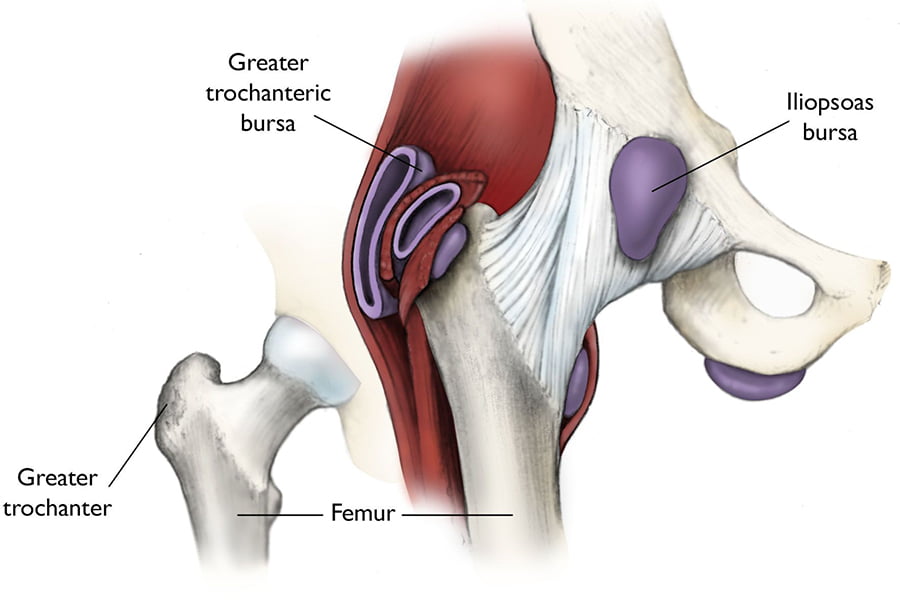
Trochanteric bursitis is an inflammation of the bursa on the side of the hip. Your body contains hundreds of thin, slippery sacs called bursa. These sacs contain a small amount of fluid. They are located where there is movement of a joint causing two tissues to rub against each other. Their purpose is to reduce friction in these areas to allow the joint to move freely.
Causes of trochanteric bursitis
Bursa can become inflamed, usually because of repetitive overuse injury or excessive pressure. An acute injury such as a bruise, systemic conditions such as arthritis, and infection of the bursa can cause them to become inflamed. When the normally slippery bursa becomes thickened and swollen, bursitis is the result.
The side of the hip is a common spot for bursitis to develop. A large tendon passes over the bony bump on the side of the hip. The bony bump is the greater trochanter. It is the point where the large buttock muscles (gluteus maximus) that move the hip connect to the femur. Trochanteric bursitis is inflammation of the bursa at this spot.
Trochanteric bursitis usually appears gradually, with no obvious underlying injury or cause. It can result from the buildup of friction in the bursa during walking if the long tendon on the side of the thigh is tight. It is unclear what causes this tightening of the tendon. The gluteus maximus attaches to this long tendon, pulling it over the greater trochanter with each step. When the tendon is tight, it rubs against the bursa. Therefore, it is common in older individuals. Younger patients who are extremely active in exercises such as walking, running or biking may also experience trochanteric bursitis.
Symptoms of trochanteric bursitis
Trochanteric bursitis presents itself as pain in the area of the hip right over the bump that forms the greater trochanter. It may radiate down the outside of the thigh. As the problem progresses, the symptoms produce a limp when walking and stiffness in the hip joint. Eventually, the pain will also be present at rest and may even cause a problem with sleeping.
If you are experiencing pain in your hip, call us at the Zehr Center at 239-596-0100. This painful condition can be diagnosed through an examination. X-rays can rule out any other abnormalities in your hip. An injection of a local anesthetic, combined with cortisone to reduce the inflammation, may resolve the problem.
For more information on this subject, call The Zehr Center for Orthopaedics at 239-596-0100 or visit www.zehrcenter.com. The information contained herein is compiled from a variety of sources. It may not be complete or timely. It does not cover all diseases, physical conditions, ailments, or treatments. The information should NOT be used in place of a visit with your healthcare provider, nor should you disregard the advice of your health care provider because of any information you read on this topic.